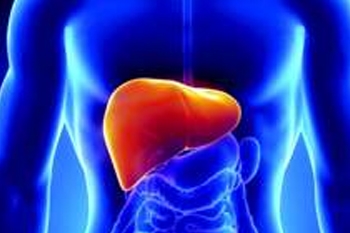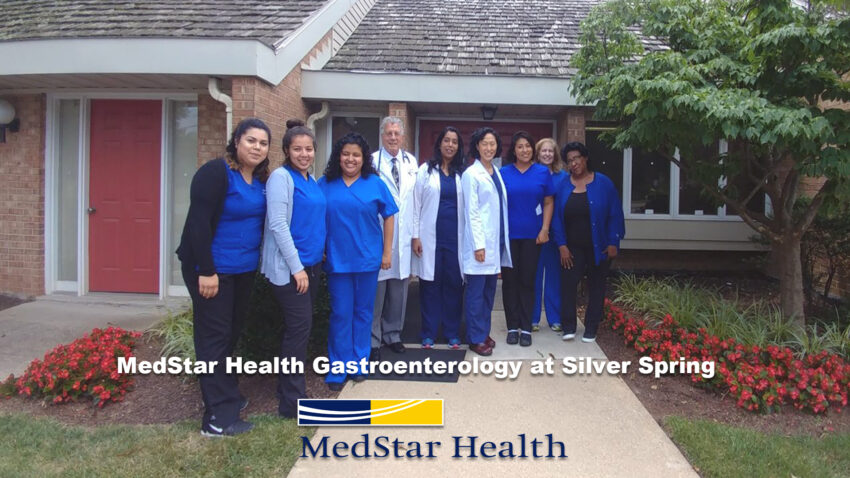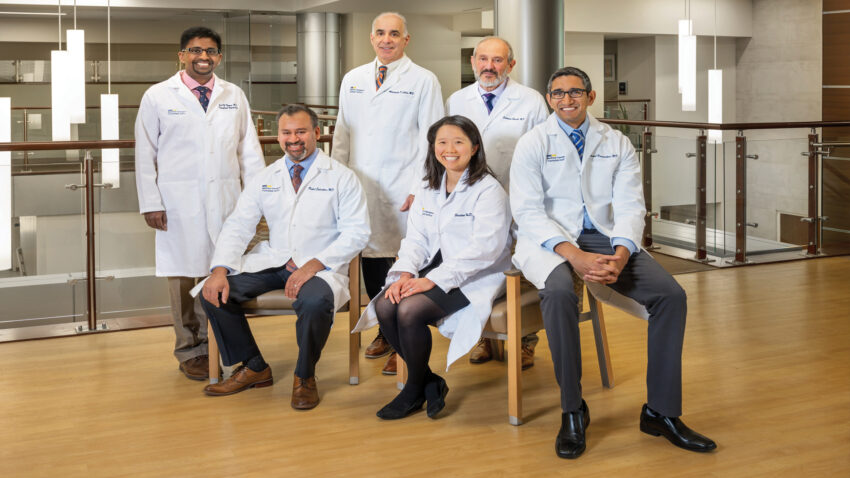
- Cirrhosis
- Hepatitis B and Hepatitis C
- Autoimmune hepatitis
- Fatty liver disease (NASH)
- Hepatocellular carcinoma (Liver Cancer)
- Pancreatic tumors and disease
- Liver tumors
- Pediatric liver disease
- Bile duct tumors
Recently Dr. Doman became the Director of The MedStar GI Center in Silver Spring! Congratulations!
Housecall’s Guests
Thomas Fishbein, MD -Executive Director, MedStar Georgetown Transplant Institute (in top photo, seated bottom middle)
Dr. Fishbein explains that patients who need transplants and/or cancer care have a great burden already on them and need specialist from a variety of areas. The Institute allows all types of care that these patients might need all under one roof with one team, one dream, one mission, to make things seamless for the patients delivery of care. The Institute has several different programs like Medical Liver Disease, Children’s Care, Liver Surgery, Surgical Care, Research Studies, New Treatments and Trials are available as part of the patient’s treatment.
Emily Winslow, MD -Regional Chief, Hepatopancticobiliary Surgery, MedStar Georgetown University Hospital (in top photo, first to the left)
Hepatopancticobiliary Surgery is in the upper right abdominal area were the organs and structures are very close together. There is a wide variety of reasons you would need Dr. Winslow. Pre Cancer, Cancer, Benign Disease, Tumors that start in the Liver and grow/spread to the Liver from elsewhere, Pancreas Cancer, and Others. The prognosis for pancreatic cancer is bad because it is always diagnosed late. In general the prognosis has improved over time, but early detection is a separate issue. Cyst related activities is one part of early detection and genetic mutation needs screening overall. There is some evidence that there is a genetic component to pancreatic cancer. Recent changes in recommendation that all patients with pancreatic cancer, no matter what age or family history, should get a GRIM germline test to see if the basic genetic testing of the blood has one of a group of inherited mutations. If they have mutations then it can be screened in a patient’s relatives if the testing is done while the patient is alive.
Rohit Satoskar, MD -Medical Director, Liver Transplantation, MedStar Georgetown Transplant Institute (in Hepatologist Team photo, second to the left)
Dr. Satoskar tells us that Liver Disease is on the rise, most common is Fatty Liver Disease common in adults, but becoming more common in children. It really mirrors the rise in obesity and diabetes which are the most common risk factors. They also see patients with Congenital Diseases, Viral Hepatitis, Hepatitis B & C, and Alcohol related Liver Diseases that have shown a sharp increase especially during the pandemic. All lead to chronic inflammation in the liver and can lead to Cirrhosis and consequences from such as liver cancer or other complications.
What Can Lead to Non-Alcoholic Fatty Liver Disease (NAFLD)?
Obesity, Diabetes, Insulin resistances, High Fat Levels
NASH is the form of NAFLD in which you have inflammation of the liver and liver damage, in addition to fat in your liver. The inflammation and liver damage of NASH can cause fibrosis, or scarring, of the liver. NASH may lead to cirrhosis, in which the liver is scarred and permanently damaged.
Alcoholic related Liver Disease is a real problem I have seen personally in my life, within my family and friends and I’m sure most people have a direct connection to this type of Liver Disease. One of my best friends who had a Liver and Kidney transplant last year had to face a surgeon like Dr. Satoskar who was Psychosocial Evaluating him to be a successful transplant candidate. It is important to understand and talk very carefully with patients to accept that drinking for them is harmful. For decades the philosophical question of helping patients from Alcoholic related Liver Disease has been and will be debated, but Dr. Satoskar and all doctors in this position help the patient in front of them to increase their life expectancy. Not only to increases a patients life span, but return them to their previous health. I see it in my best friend who is feeling better and better. They don’t drink any more and have no desire to return. They are healing well and on the mend. I’m proud and happy they are making good choices for their life.
Jennifer Verbesey, MD -Director, Living Donor Kidney Transplant Program, MedStar Georgetown Transplant Institute (in kidney team photo, top row second to the left)
Dr. Verbesey spends her time taking kidneys out of very healthy people who choose to donate a kidney and putting them in people who need those healthy kidneys in adults and pediatric patients. The common cause of Kidney Failure is Diabetes and High Blood Pressure, which often comes together. It is prevalent in African Americans and in the DC region it is high. There is also Polycysitic Kidney Disease that comes right from the kidneys. Again the worst part is that it is detected late, most people don’t show many signs. It is caught with routine testing of your the Keratin in your blood, as a diabetic for the past 24 years this is a test I have done often, each year. I’m fortunate that my kidneys have been well.
Kidney vs. Dialysis
Dialysis is great, it keeps people alive. It is like a kidney outside of the body, but it is a very hard way to live and endure all the complications that can occur.
Transplants have shown that it increases patients length of life and their quality of life. Transplants can wait 4-8 years and during that time they do get sicker.
Living Donor Kidney Transplant Program takes people who are very healthy that undergo an evaluation so they can donate a kidney and live a long happy life. This program eliminates those years patients spend on dialysis getting sicker. Those kidneys tend to work faster and last longer too.
The treatment of Hepatitis C has increased the pool of potential donors. Doctors use to not use a Hepatitis organ or only give it to a patient with Hepatitis. Now doctors can give someone a kidney with Hepatitis C and then give treatment for it. Depending on what medicine is the cure-aid it can take 8-12 weeks and is 97% effective. Medstar Georgetown Transplant Institute is at the forefront of medicine and now these livers are being used everywhere which shortens the waiting time, adding to the amount available. A group of Hepatitis B & C patients, while waiting for their transplant can stabilize or improve with treatment. When doing the transplant evaluation the doctor needs to determine who can medically be treated and potentially improve and avoid a transplant and those who need to be expedited. Some patients are available to avoid transplant by treating the underlying disease.
To learn more visit here or please call 202-444-3700.
Watch this episode of Housecall below, or on MMC’s YouTube channel and subscribe!






